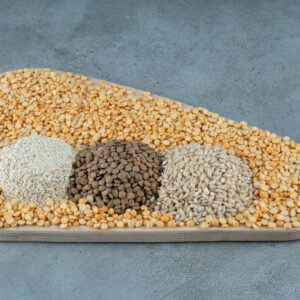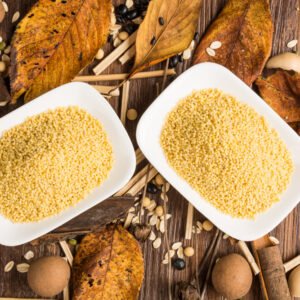When standing in the grain aisle, have you ever wondered whether quinoa is truly worth the premium price compared to rice? This nutritional debate has gained significant traction as health-conscious consumers seek better alternatives to traditional staples. Understanding the difference between quinoa and rice nutrition can transform your meal planning and overall health outcomes.
Both grains serve as dietary foundations for billions of people worldwide, yet their nutritional profiles tell vastly different stories. While rice has fed civilizations for millennia, quinoa has emerged as a modern superfood, challenging conventional wisdom about grain nutrition. This comprehensive comparison will help you make informed decisions about incorporating these grains into your diet.
Understanding the Nutritional Foundations
What Makes Quinoa Special?
Quinoa stands apart from traditional grains because it’s technically a seed, not a grain. This pseudocereal originates from the Andes Mountains and has been cultivated for over 5,000 years. The nutritional composition of quinoa includes all nine essential amino acids, making it a complete protein source—a rarity in the plant kingdom.
The protein content in quinoa ranges from 14-18%, significantly higher than most grains. This complete amino acid profile supports muscle development, tissue repair, and overall metabolic function. Additionally, quinoa contains substantial amounts of fiber, healthy fats, and essential minerals.
Rice: The Global Staple
Rice remains the primary food source for more than half the world’s population. Brown rice retains its nutrient-rich bran layer, while white rice undergoes processing that removes most vitamins and minerals. The nutritional value varies dramatically between these varieties.
Brown rice provides B vitamins, fiber, and minerals like manganese and selenium. However, rice lacks several essential amino acids, making it an incomplete protein source when consumed alone.
Detailed Quinoa vs Rice Nutrition Comparison
Protein Quality and Quantity
The most significant difference between quinoa and rice nutrition lies in protein quality. Quinoa provides approximately 8 grams of protein per cooked cup, compared to rice’s 5 grams for brown rice and 4 grams for white rice.
More importantly, quinoa’s protein completeness means your body can utilize it more effectively for muscle synthesis and cellular repair. Rice proteins lack adequate levels of lysine, an essential amino acid crucial for protein synthesis and calcium absorption.
For individuals following plant-based diets, this distinction becomes particularly relevant. Quinoa can serve as a standalone protein source, while rice requires combination with legumes or other protein sources to achieve amino acid completeness.
Fiber and Digestive Health
Fiber content represents another area where these grains diverge significantly. Quinoa contains approximately 5 grams of fiber per cooked cup, while brown rice provides about 4 grams, and white rice offers minimal fiber at roughly 1 gram.
Higher fiber intake supports digestive health, blood sugar regulation, and cardiovascular wellness. The soluble fiber in quinoa helps lower cholesterol levels and promotes beneficial gut bacteria growth.
Mineral Density Comparison
Quinoa demonstrates superior mineral density across multiple categories:
Iron Content: Quinoa provides nearly 3 milligrams of iron per cup, compared to brown rice’s 1 milligram. This difference proves significant for individuals at risk of iron deficiency.
Magnesium Levels: With 120 milligrams per cup, quinoa delivers substantially more magnesium than rice varieties. Magnesium supports bone health, muscle function, and energy metabolism.
Phosphorus and Potassium: Quinoa contains higher levels of both minerals, contributing to bone strength and cardiovascular health.
Vitamin Profiles
While neither grain serves as a vitamin powerhouse, subtle differences exist. Quinoa provides more folate and vitamin E, while brown rice offers higher levels of niacin and thiamin. White rice, often fortified, may contain added B vitamins and iron.
Health Benefits and Considerations
Weight Management Implications
The higher protein and fiber content in quinoa promotes greater satiety compared to rice. This increased feeling of fullness can support weight management efforts by reducing overall caloric intake throughout the day.
Research suggests that protein-rich foods like quinoa require more energy to digest, potentially boosting metabolic rate. The lower glycemic index of quinoa also helps maintain stable blood sugar levels, reducing cravings and energy crashes.
Blood Sugar Impact
Quinoa’s complex carbohydrate structure and fiber content result in slower glucose absorption compared to white rice. This characteristic benefits individuals managing diabetes or seeking stable energy levels throughout the day.
Brown rice falls somewhere between quinoa and white rice in terms of glycemic impact, making it a moderate option for blood sugar management.
Anti-inflammatory Properties
Quinoa contains unique compounds called saponins, which possess anti-inflammatory properties. While these compounds can cause mild digestive upset in sensitive individuals, they may offer protective benefits against chronic inflammation.
Both quinoa and brown rice contain antioxidants, though in different concentrations and types. These compounds help combat oxidative stress and may reduce disease risk.
This is a blog you should definitely read – Quinoa vs Rice: Which Is Tastier and Healthier?
Practical Considerations for Meal Planning
Cost and Accessibility
Rice typically costs significantly less than quinoa, making it more accessible for budget-conscious consumers. However, the superior nutritional density of quinoa may justify the higher price for those prioritizing optimal nutrition.
Preparation and Cooking
Rice generally requires simpler preparation and shorter cooking times compared to quinoa. Quinoa benefits from rinsing before cooking to remove natural saponins that can create bitter flavors.
Both grains offer versatility in meal preparation, though quinoa’s nuttier flavor and slightly firmer texture provide different culinary experiences.
Cultural and Dietary Preferences
Rice holds deep cultural significance in many cuisines, making it an irreplaceable element in traditional dishes. Quinoa offers an excellent alternative for those seeking to diversify their grain intake without completely abandoning familiar preparations.
Making the Right Choice for Your Health
The choice between quinoa and rice ultimately depends on individual health goals, dietary restrictions, and personal preferences. For optimal nutrition, quinoa clearly provides superior protein quality, fiber content, and mineral density.
However, rice remains a valuable dietary component, particularly brown rice varieties that retain their nutritional bran layer. Many nutrition experts recommend incorporating both grains into a balanced diet to maximize nutritional benefits and meal variety.
CMS Industries, as a leading agricultural products manufacturer and supplier in India, recognizes the importance of providing high-quality grains that support optimal nutrition. Our commitment to sustainable farming practices ensures that both quinoa and rice products meet the highest standards for nutritional content and environmental responsibility.
Conclusion: Embracing Nutritional Diversity
The difference between quinoa and rice nutrition highlights the importance of dietary diversity in achieving optimal health outcomes. While quinoa offers superior protein completeness and mineral density, rice provides affordable nutrition and cultural significance that cannot be overlooked.
Rather than viewing these grains as competing options, consider them complementary components of a well-rounded diet. Quinoa vs rice nutrition comparisons reveal that both have unique strengths that can support different aspects of health and wellness.
For those seeking to optimize their nutritional intake, gradually incorporating quinoa into meal rotations alongside traditional rice dishes can provide the best of both worlds. This approach allows you to benefit from quinoa’s superior protein profile while maintaining the affordability and versatility that rice provides.
Ready to explore premium agricultural products that support your health goals? Contact CMS Industries to learn more about our high-quality grains and agricultural solutions that bring superior nutrition to your table.
Frequently Asked Questions
Q1: Is quinoa actually better than rice nutritionally?
Quinoa provides complete protein with all essential amino acids, higher fiber content, and superior mineral density compared to rice, making it nutritionally superior in most categories.
Q2: Why is quinoa more expensive than rice?
Quinoa costs more due to specialized growing conditions, lower crop yields, complex harvesting processes, and higher demand relative to supply in international markets.
Q3: Can I replace all rice with quinoa in my diet?
While nutritionally beneficial, complete replacement isn’t necessary. Incorporating both grains provides dietary variety, cultural enjoyment, and balanced nutrition while managing food costs effectively.
Q4: Which grain is better for weight loss?
Quinoa’s higher protein and fiber content promotes greater satiety and stable blood sugar levels, potentially supporting weight management more effectively than white rice.
Q5: How do I properly prepare quinoa to avoid bitterness?
Rinse quinoa thoroughly under cold water before cooking to remove natural saponins that cause bitter flavors. Use a fine-mesh strainer and rinse until water runs clear.





